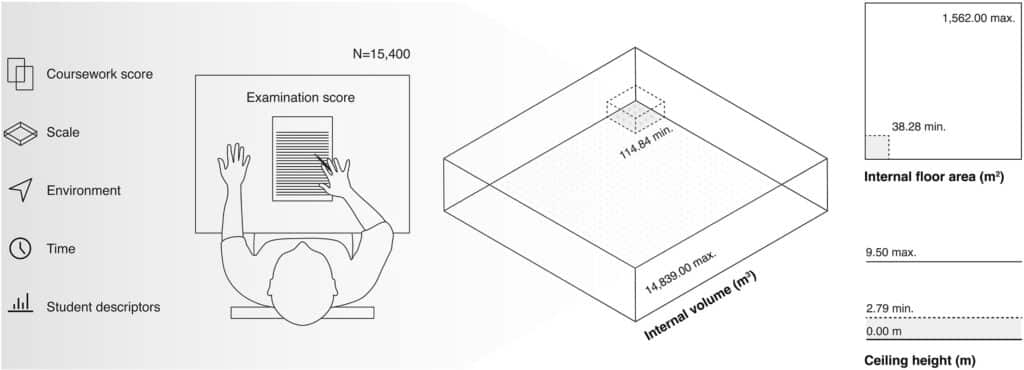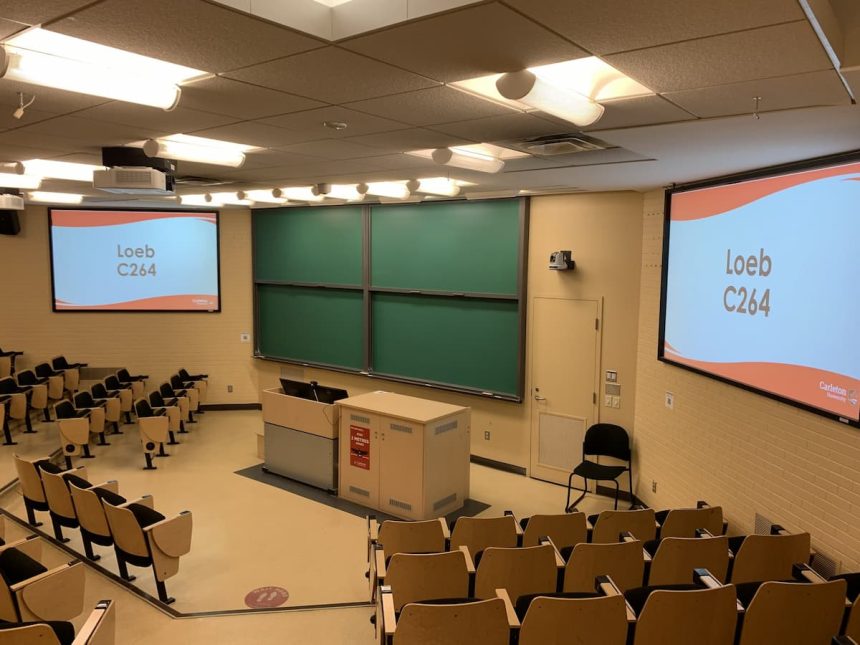A study involving 15,400 students suggests that those who take their university exams in rooms with high ceilings perform worse than those who take them in standard rooms. Electroencephalograms revealed an increased activity in the brain region associated with concentration on a challenging task in these large rooms. These results thus offer a rarely explored insight into the influence of interior architecture on our cognitive performance.
Exam venues typically choose themselves based on their scalability and capacity to accommodate a large number of students simultaneously. The objective is both to facilitate logistics and to bring candidates together under the same conditions. This makes it easy to authenticate their identity on a large scale, thereby optimizing the cost-effectiveness of the staff required for supervision. These venues range from specially rented racetracks to large university amphitheaters and standard classrooms.
However, very few studies have explored how the interior layout and characteristics of exam rooms could influence student performance.
The rare study examining the question was more focused on specific parameters, such as familiarity with the environment. Nevertheless, one more recent study shows that the interior space of the exam room is impacted by brain activity markers associated with higher-order cognitive processes (which go beyond memorizing information, such as reflection and analysis).
For its part, a team from the University of South Australia (UniSA) and Deakin University (also in Australia) directly evaluated the influence of exam room size on student results. “Given the association between [previously] identified brain signatures and their role in cognitive performance, we wanted to test the impact of a large room in a real-world context with a cognitive task that has been shown to induce stress (i.e., an undergraduate exam),” the researchers explained in their new study, recently published in the Journal of Environmental Psychology.

Isabella S. Bower et al.
Increased Brain Activity Related to Concentration on a Difficult Task
To conduct their investigation, the Australian researchers analyzed data from 15,400 undergraduate students across three different university campuses between 2011 and 2019. The researchers compared their exam results with the ceiling heights of the various rooms they were required to take. Ceiling height is generally proportional to room size. We also considered variation factors like age, gender, and the year they took the exams. The analysis also took into account their possible prior experience with the evaluated courses.
Researchers discovered a correlation between poor results and exams taken in rooms with high ceilings. Experts suspect this is partly due to the fact that some of these spaces (such as sports gymnasiums, for example) are mostly reserved for sporting or festive events rather than activities requiring high concentration.
However, it was difficult to determine precisely whether these poor results were truly linked to room size. For instance, it could be due to other factors like the number of students in each room or the insulation quality. These aspects can lead to fluctuations in temperature and air quality, which, in turn, can affect the brain and the body in general.
“The key point is that large rooms with high ceilings seem to disadvantage students, and we needed to understand what brain mechanisms are at play and whether this affects all students to the same degree,” explains the study’s lead author, Isabella Bower, in a UniSA press release.
To confirm their hypothesis (the influence of room size), the researchers invited students to participate in virtual reality experiments simulating exams in a room while recording their electroencephalogram. It was found that simply sitting in a room with a high ceiling led to increased brain activity associated with concentrating on a difficult task.
This data suggests that adjustments are needed so that students taking exams are all on the same level and benefit from the same conditions to succeed. “These findings support the idea that the scale of the built environment influences cognitive performance and argues against holding exams in large, high-ceilinged rooms,” the researchers conclude.


